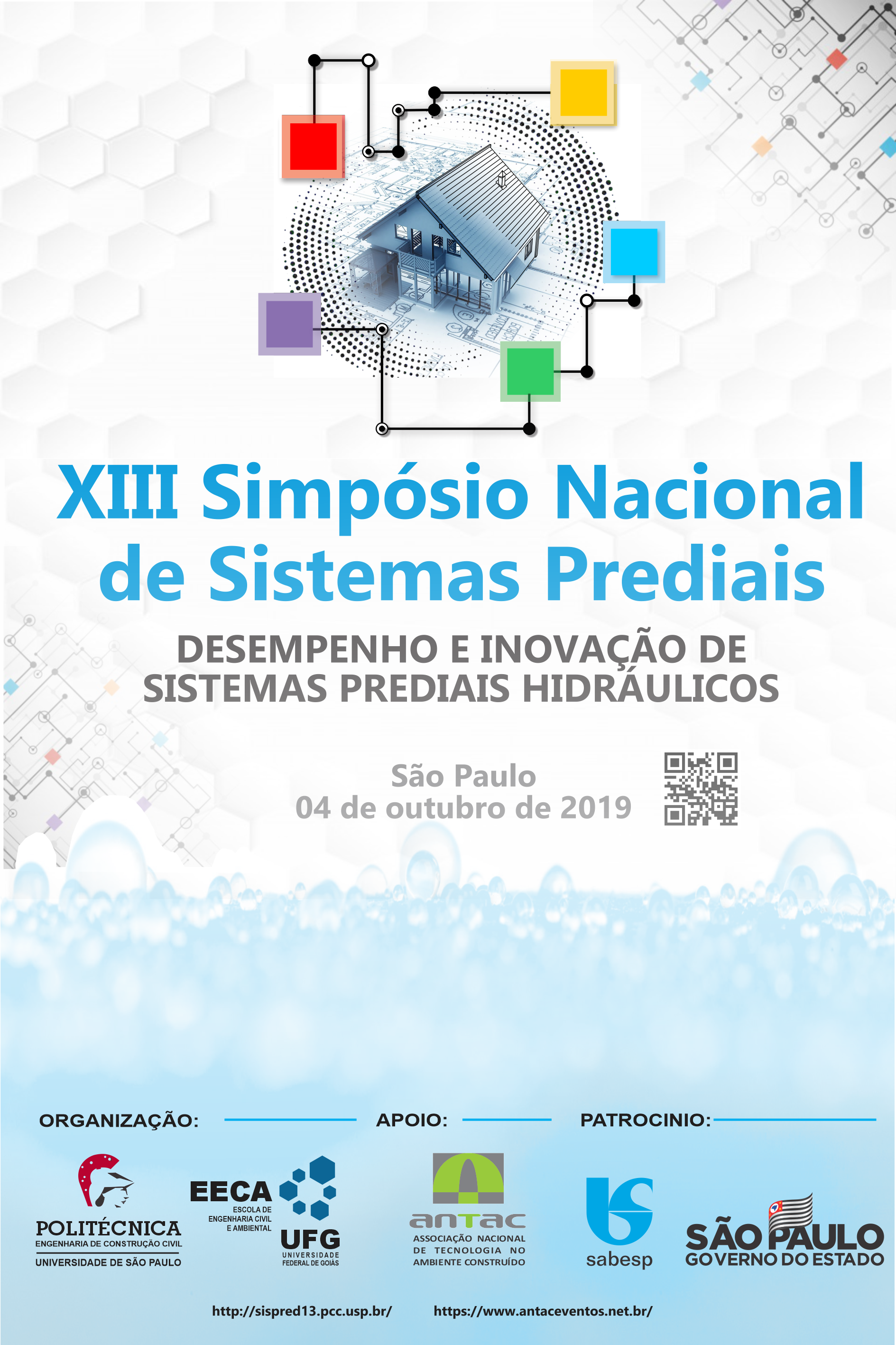Rainwater harvesting in Brasilia International Airport: estimating potential water reductiongs for irrigation and floor washing
DOI:
https://doi.org/10.46421/sispred.v1i.1594Keywords:
Water End Uses, Rainwater Harvesting, AirportAbstract
ABSTRACT: In search of a sustainable management of water resources, it is proposed on this research to analyze the potential water reductions by in the International Airport of Brasilia through the Rainwater Harvesting (RWH). This analysis presupposes an understanding of the global water consumption of this building, identifying its annual consumption and the end uses of disaggregated non-potable water uses to enable the calculations of water supply and demand. The results showed that in this building the average annual consumption is 158.815 m³. The water end uses identified and estimated were floor cleaning, which consumes about 20,900 L/day; of the airplane track cleaning, that consumes around 789 L/day; irrigation of the green area with average consumption of 47,857 L/day. From this information, two different scenarios were simulated to identify the potential for reducing water consumption by the RWH system: scenario 1: irrigation and scenario 2, irrigation, airplane track cleaning and floor cleaning. The results showed an economy of approximately 4,562 m³/year in Scenario 1, and 10,387 m³/year for Scenario 2, which represents a potential reduction of water consumption of approximately 3% and 7% respectively.
Downloads
References
AGÊNCIA NACIONAL DE ÁGUAS. Conjuntura dos recursos hídricos no Brasil 2018: informe anual. Brasília: ANA, 2018. 72p.
BARBOSA, G. G.; SANT'ANA, D.; BEZERRA, S.P. (2018). Indicadores de consumo de consumo de água e análise comparativa entre o aproveitamento de águas pluviais e o reúso de águas cinzas em edificações de ensino do Campus Darcy Ribeiro - UnB. Paranoá, Brasília, n° 22, p. 1-15.
BARROS, J. R. (2003). A chuva no Distrito Federal: O regime e as excepcionalidades do ritmo. Dissertação de Mestrado em Arquitetura e Urbanismo. Programa de Pós-Graduação em Geografia, Universidade Estadual Paulista, Rio Claro, SP, p. 115-117.
CARVALHO, I.C.; CALIJURI, M.L.; ASSEMANY, P.P.; SILVA, M.D.; NETO, R.F.; SANTIAGO, A.F.; SOUZA, M.H. (2013). Sustainable airport environments: A review of water conservation practices in airports. Resources, Conservation and Recycling 74. pp. 27– 36.
FREIRE, M.T.M. (2011). O consumo racional de água no aeroporto internacional de Salvador, Bahia/ Brasil. Dissertação de Mestrado em Engenharia Industrial. Programa de Pós-Graduação em Engenharia Industrial, Escola Politécnica da Universidade Federal da Bahia, 168p.
FRISSO, C.; JÚNIOR, W.C.S.; URRICHI, W. (2007). Uso eficiente de água no Aeroporto Internacional de Guarulhos/SP. In: Semana Nacional de Ciência e Tecnologia XIII ENCITA - Encontro de Iniciação e Pós-graduação do ITA. São José dos Campos - SP, Out. 2007.
GHISI, E.; FERREIRA, D. F. (2007). Potential for potable water savings by using rainwater and greywater in a multi-storey residential building in southern Brazil. Building and Environment, v. 42, n. 7, p. 2512-2522.
GHISI, E; OLIVEIRA, S. M. (2007). Potential for potable water savings by combining the use of rainwater and greywater in houses in southern Brazil. Building and Environment, v. 42, n. 4, p. 1731-1742.
GRIGGS, J. C.; SHOULER, M. C.; HALL, J. (1998). Water conservation and the built environment. In: 21 AD: Water. Oxford: Oxford University Press.
MADDAUS, W. O.; MADDAUS, M. L. (2004). Evaluating water conservation cost-effectiveness with an end-use model. Proceedings Water Sources Conference. Austin Texas: AWWA, 2004.
SANT’ANA, D.; BOEGER, L.; VILELA, L. (2013). Aproveitamento de água pluvial e o reúso de águas cinzas em edifícios residenciais de Brasília - parte 2: viabilidade técnica e econômica. Paranoá, Brasília, n° 10, p. 85-94.
SANT'ANA, D. (2011). A socio-technical study of water consumption and water conservation in Brazilian dwelling. 2011. 411p. Tese (Doutorado no Instituto de Desenvolvimento Sustentável) - Universidade de Oxford Brookes, Oxford, Reino Unido.
SANTOS, S. A. (2018). Análise comparativa do uso de sistemas de aproveitamento de águas pluviais e reúso de águas cinzas na Rodoviária do Plano Piloto, Brasília-DF. Dissertação de Mestrado em Arquitetura e Urbanismo. Programa de Pós-Graduação em Arquitetura e Urbanismo, Faculdade de Arquitetura e Urbanismo, Universidade de Brasília, Brasília, DF, 114p.
SANTOS, S. A.; SANT’ANA, D. (2019). Análise do potencial de redução do consumo de água potável pelo aproveitamento de águas pluviais e reúso de águas cinzas na Rodoviária do Plano Piloto de Brasília - DF. Paranoá, Brasília, n° 23, p. 84-92.
TOMAZ, P. Aproveitamento de Água de Chuva – para Áreas Urbanas e Fins não Potáveis. 2. ed. São Paulo: Navegar Editora, 2005. 176p.
VICTORINO, C.J.A. Planeta água morrendo de sede: uma visão analítica na metodologia do uso e abuso dos recursos hídricos. Porto Alegre: EDIPUCRS, 2007. p. 21.

